
New lease of lifetech
From drug research and biotech to portable medical devices and environmentally-sustainable solutions, innovation is coming to the fore in multiple areas of deep science. What these ventures need now are funders to back them all the way
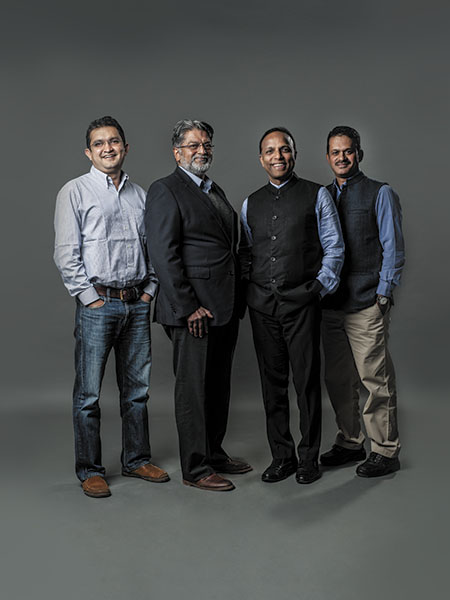
Image: Aparna Nori for Forbes India
At a recent competition organised by India’s C-CAMP (Centre for Cellular and Molecular Platforms), more than 1,500 entries vied for a shot at the top few spots. C-CAMP, started in 2010, is a government-backed agency tasked with promoting deep-science-based startups in India.
A four-month gruelling process threw up nine finalists at the competition, called the National Bio Entrepreneurship Competition, pitching before a grand jury. Their ventures represented what can be best described as India’s emerging ‘lifetech’ industry —spanning biotech, drug discovery, agriculture, medical devices and even environmentally-sustainable alternatives to toilet soap.
At stake was a little bit of cash, including ₹1 million sponsored by Ankur Seeds, ₹300,000 from Pfizer, and $15,000 in Amazon Web Services credits. There was also the investment opportunity of up to $100,000 from the Tata Trusts’ Foundation for Innovation and Social Entrepreneurship.
The competition, as well as the large number and quality of the entrants, was reflected in the innovative ideas—a nanofibre membrane to carry bio-fertilisers, a water-less cleanser for the soldiers of the Indian armed forces, an automated neonatal early-warning system.
Such initiatives may have attracted little attention in India—where startups have come to become synonymous with ecommerce—but the good news is that these entrepreneurs have caught the attention of the people who matter. “They have such innovative ideas,” Kiran Mazumdar-Shaw, founder of Biocon Ltd, who was one of the judges, tells Forbes India in an interview.
Kavitha S, founder of FIB-SOL Life Technologies, won the Ankur Seeds Prize as well as the investment opportunity from the Tata-backed foundation. FIB-SOL Life Technologies offers ultra-light weight, biodegradable and water-soluble nanofibre carriers for bio-fertilisers.
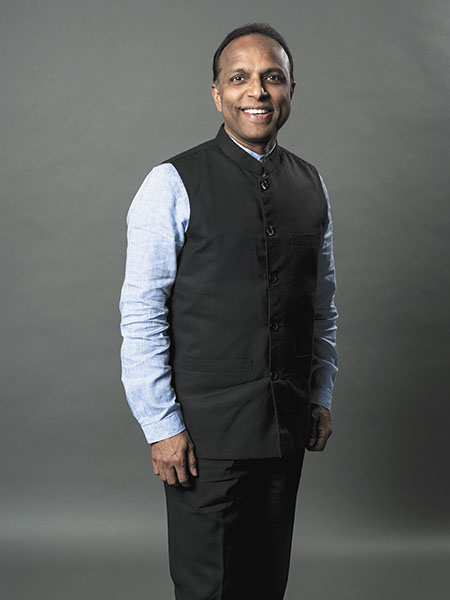 ANAND ANANDKUMAR, 53
ANAND ANANDKUMAR, 53Designation: founder, Bugworks Research
Founded: 2014
Venture: Development of nextgeneration antibiotics to combat drug-resistant ‘superbug’ bacteria
Funding: DBT-BIRAC ($0.5 mln), Baxter Ventures ($1.5 mln), Angel investors ($1.0 mln), CARB-X award ($2.6 mln)
Image: Aparna Nori for Forbes India
The fertiliser-carrying membrane (FCM) is intended to be used in organic farming. The bacteria are more stable in this membrane and 5 gm of the membrane is sufficient to fertilise an acre, C-CAMP said in a note about the winners, in December. Kavitha started her venture in 2013, which is a spin-off from IIT Madras’s incubation centre, and she has been a recipient of various government grants. She is now ready to step up commercialisation.
These are exciting signs of a nascent, but promising, rise in Indian life sciences research and innovation. They augur well for the growth of a broader ecosystem that can tap the Indian market for solutions that can have applications in advanced economies too. Mazumdar-Shaw calls it “lifetech”.
From established pharma companies such as Biocon, which recently won the first approval in the US for a biosimilar drug to treat certain types of breast cancer, to brand new startups with little more than a proof of concept or early working prototypes, the change is happening at many levels and on multiple fronts.
“Whether it’s drug discovery or biosimilars or novel biologics or devices, I’ve never seen a larger trend (in India) than the one that is starting up now, in terms of novel ideas coming up,” says Anand Anandkumar, co-founder of Bugworks Research. Bugworks is a spin-off from Cellworks, a therapeutic design company using proprietary simulation technology, and he serves as an external director and chairman of the board of directors of the India operations of Cellworks.
Anandkumar, a prolific engineer, in an earlier avatar helped build the India operations of Magma Design Automation, a ‘fabless’ chip design company, in Bengaluru. With backing from C-CAMP—comprising grants and the use of its state-of-the-art labs in Bengaluru—he is now chasing the next generation of antibiotics to combat bugs that have become resistant to medicines currently in use for treating common infections such as pneumonia and diarrhoea.
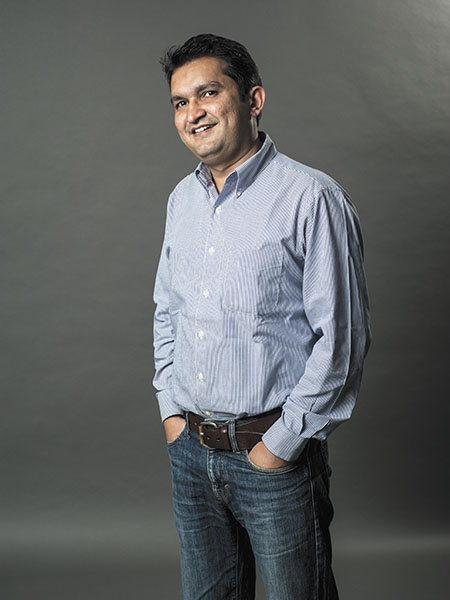 TASLIMARIF SAIYED, 37
TASLIMARIF SAIYED, 37The Catalyst
Designation: CEO and director, C-CAMP
Founded: 2010
Venture: Government of Indiafunded agency to promote deepscience-based entrepreneurship
Funding: Department of biotechnology, government of India
Image: Aparna Nori for Forbes India
Designation: CEO and director, C-CAMP
Founded: 2010
Venture: Government of Indiafunded agency to promote deepscience-based entrepreneurship
Funding: Department of biotechnology, government of India
Image: Aparna Nori for Forbes India
“If you look at our lab, you’ll see different entrepreneurs just working side by side, without any kinds of barriers,” Taslimarif Saiyed, C-CAMP’s CEO and director, said in an interview at the centre in Bengaluru recently. “Our aim is not to become the end-innovator by ourselves, but to catalyse many such efforts.” Indeed, while the government is often derided for red tape in India, C-CAMP is shaping up to be an unsung success story.
It has thus far succeeded in nurturing the beginnings of a culture of informal, unfettered back and forth of ideas among multiple parties—scientists, entrepreneurs, investors and so on that one tends to associate only with universities and industry in California.
“You don’t even have to have a startup,” Saiyed says of the grant. The selection process, of course, is stringent, and involves a panel of experts that C-CAMP has carefully put together. It first started funding these ideas in 2013-14, and the most important objective is to ferret out and encourage deep-science based ventures, to get high-calibre academic scientists to take an equal interest in “translational research”—which literally means translating their work in the research lab into a commercially viable product and/or service that could benefit millions.
C-CAMP has a centre in Bengaluru, co-located with the National Centre for Biological Sciences. However, it works more like a network across the country, and has funded 100 ideas—some are startups, but others are work-in-progress missions.
Saiyed calls them “non-obvious” ideas, which C-CAMP is willing to take a bet on, to help the scientist-engineer-entrepreneur figure out if the brainwave has potential. One such non-obvious field: Geriatrics, a growing concern in India.
This kind of support is crucial, says Anandkumar. “We don’t have a rich VC [venture capital] environment in this space, so clearly somebody had to fuel it.” The ideas are beginning to come, and the risk-taking ability has improved over the last few years because generations are changing and India’s department of biotechnology (DBT) has played such an important role, he says.
That role includes BIRAC, or the Biotechnology Industry Research Assistance Council, which has created grant schemes such as the Biotechnology Ignition Grant.
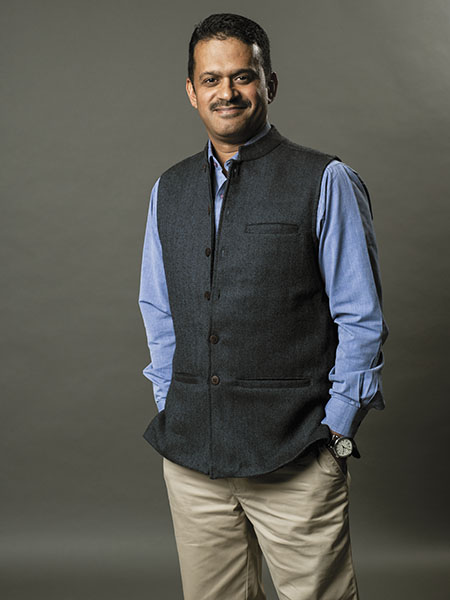 ANAND MADANAGOPAL, 44
ANAND MADANAGOPAL, 44Designation: Founder, Cardiac Design Labs
Founded: 2011
Venture: Mobile, intelligent remote cardiac monitoring
Funding: Seed funding from Cyient; Series A funding
Image: Aparna Nori for Forbes India
Founded: 2011
Venture: Mobile, intelligent remote cardiac monitoring
Funding: Seed funding from Cyient; Series A funding
Image: Aparna Nori for Forbes India
DBT’s involvement helped with another important necessity for biotech to flourish. One needs “heavy-duty incubation” infrastructure comprising modern labs, which has also happened “beautifully” in the last five years, Anandkumar says. This has happened with biotech parks coming up, such as C-CAMP, which in Bengaluru is situated within the campus of National Centre for Biological Sciences, the Helix Park in Electronics City and similar hubs in cities such as Hyderabad.
“That means people like us can focus on innovation and not have to put in plant and machinery,” adds Anandkumar.
Biotech research isn’t the only field in which various elements of the ecosystem are coming together. At Cardiac Design Labs, some 30 km away from C-CAMP, on the other side of the city, Anand Madanagopal and his co-founders are developing the next generation of cardiac monitors and software algorithms that tap the power of machine learning.
“We are trying to build ‘intelligent remote holters’,” Madanagopal told Forbes in a recent interview. The use of holters—externally wearable heart monitoring devices—along with ECGs isn’t new, but existing methods have limitations, including one important one—they aren’t real-time.
Madanagopal is tackling another problem as well: “These are tests today done by large hospitals, but we are trying to get it to even faraway places so that patients don’t have to travel to a big city for just a first-level test, meet cardiologists and so on,” he says.
Cardiac Design Labs, which won the grand jury prize at Google’s Launchpad competition in 2016, has built the IP (intellectual property) to enable such devices. “All the clinical algorithms required and the IP are owned by us and it is all in place. We have also done multiple rounds of tests and deployment,” says the co-founder.
The venture raised some early-stage funding from Cyient in Hyderabad, and is now looking to close another round of funding—to raise an undisclosed amount to go from the 70 or so devices deployed in the market today to several thousands. Madanagopal also expects a version 2.0 very soon, which will become the real “commercial model that the world will see”, he said in an interview.
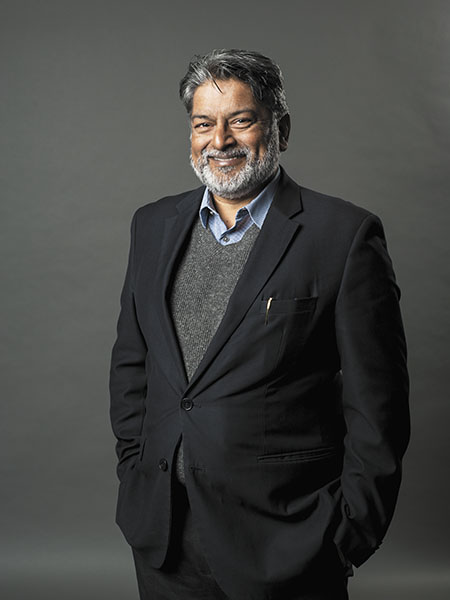 VIJAY CHANDRU, 64
VIJAY CHANDRU, 64Designation: Co-founder and chairman, Strand Life Sciences
Founded: 2000
Venture: Gene sequencing-based predictive and clinical diagnostics for cancer
Funding: $17 mln (The funding and details are for Strand Life Sciences alone; this excludes an ongoing transaction with Healthcare Global)
Image: Aparna Nori for Forbes India
Founded: 2000
Venture: Gene sequencing-based predictive and clinical diagnostics for cancer
Funding: $17 mln (The funding and details are for Strand Life Sciences alone; this excludes an ongoing transaction with Healthcare Global)
Image: Aparna Nori for Forbes India
Cardiac Design went commercial in January 2017, after four years of developing its product. It has consciously built its products for emerging economies, with India being the first test bed—perfecting a pay-per-use model fine-tuned for Indian realities. “The Indian market is very tough, and if it works here, it will work anywhere,” explains Madanagopal.
Cross-border efforts are coming up too, again tapping the potential India offers because of its demographics. The large population throws up large numbers of people with various conditions—from heart disease to diabetes to cancer. At UE LifeSciences, for instance, entrepreneur Mihir Shah has built a US-India startup, manufacturing a portable battery-powered breast scan device in India. The non-invasive, radiation-free scan is user-friendly enough to be operated in primary health centres. A scan could cost as little as one dollar.
Shah and his co-founders took research developed in the US and turned it into a device that can take timely breast scans to corners of India where such diagnostics would never have reached otherwise. Shah’s venture may also turn out to be a commercial success, helping him scale up; General Electric Corp has entered into an agreement with UE to market the devices over 25 countries. That raises the chances of large hospital chains and diagnostics labs adopting the devices.
Started in 2012, UE Lifesciences is backed by Unitus Seed Fund, an impact venture capital firm in India, and from Mazumdar-Shaw and Ranjan Pai, managing director of the Manipal Group, in their personal capacities. High net-worth individuals (HNIs) from India’s first round of startups that have now become established companies—such as Mazumdar-Shaw, Senapathy Gopalakrishnan, co-founder of Infosys, and Pai—are starting a new wave of venture investments in India. Unlike ecommerce-based startups, these are typically long-gestation deep-tech ventures.
“ Biotech, with AI and quantum computing, will redefine human society in the 21st century.
Cardiac Design Labs and UE LifeSciences are making their products at a time when companies like Medwell Ventures and Portea Medical are bringing home health to urban India.
Local manufacturers are also in the fray, such as BPL Medical Technologies, which is testing portable devices for a variety of uses that can be hooked up to the cloud using smartphones.
The talent piece of the puzzle is also beginning to fall into place because there are PhDs and post-docs returning to India from the US and the UK, Anandkumar points out. “It’s not easy for them to find jobs, which means that they have to invent their way out. There’s only one Biocon or Syngene or Novozymes, unlike the software industry which sucks in a lot of people,” he says.
The availability of talent, the existence of grants and infrastructure, and backing of HNIs at the early-stage funding level are happening when India is facing a mounting health care problem. India spends a little over 1 percent of its GDP on health care, whereas in advanced economies, it’s four to five times that.
There are also pricing controls in India, which means companies from overseas balk at bringing their intellectual property here. This also means that “our only way is to (locally) innovate our way out of the problem”, Anandkumar says.
Bugworks’ effort thus far has earned the venture recognition from the prestigious CARB-X accelerator. CARB-X is short for Combating Antibiotic Resistant Bacteria Biopharmaceutical Accelerator. Launched in 2016, it is a partnership between Britain’s Wellcome Trust charity and the US government’s department of health and human services and the National Institutes of Health.
CARB-X expects to spend as much as $455 million till 2021 to back innovations that lead to effective ways to fight drug-resistant superbugs. The accelerator said it was making an initial investment of up to $2.6 million in Bugworks, with potential for option payments of another $3.6 million, in a press release in July 2017. Such validation has given Anandkumar and his team, who number less than 20, a chance to aspire for something big; to be a billion-dollar company one day doesn’t feel all that far-fetched.
If one of Bugworks’ promising candidates actually reaches the level of an approved broad-spectrum antibiotic that can kill superbugs causing many of today’s common infections, it will be the first such one in nearly half a century.
While not nearly in the billion-dollar league, one Indian biotech venture that did successfully reach the stage where it was ready for a public listing is Strand Life Sciences, called Strand Genomics in its earlier days. It was started in 2000 by scientists from the Indian Institute of Science. One of them, Professor Vijay Chandru, remains chairman and managing director, while another, Ramesh Hariharan, is CEO.
The company started out with bioinformatics, a meeting point of biology and data analytics, and became a specialist in human gene sequencing technologies. Today, Strand Life Sciences provides genetic testing-based diagnostics in cancer detection and treatment. The company has over 200 scientists and works with more than 300 large hospitals and hospital chains in India.
“Biotech, with AI [Artificial Intelligence] and quantum computing, will redefine human society in the 21st century,” Chandru said while moderating a discussion on biotech as part of a conference organised by Carnegie Endowment in December.
Strand Life Sciences came close to listing itself on the Nasdaq stock market in 2016, but called it off. On January 4, it announced that it had struck an agreement to acquire the Triesta unit of Healthcare Global Enterprises, better known as HCG, which operates cancer hospitals. The transaction gave HCG a 48.5 percent stake in the combined Strand-Triesta entity.
“Together we are well on the path to building Asia’s leading integrated analytics-driven diagnostic and genomics research company… we will work together to be at the forefront of precision medicine,” Hariharan, CEO of Strand Life Sciences, who co-founded the company with Chandru, said in a press release on January 4.
Hariharan, Chandru and two other co-founders, V Vinay and Swamy Manohar—who moved on to build other ventures of their own—are also a rare breed of role models in India that Saiyed at C-CAMP would like to see more of. This is because the participation of high-calibre academic research scientists in entrepreneurship in India is abysmally low, he points out, unlike in the US.
Funding beyond the early stage is another big hurdle. Anandkumar at Bugworks adds: “Government funding can only take you so far in the early stage. Then you fall into this huge valley and you need to (find the money to) get out of that valley.” The big VCs are just beginning to take an interest and it might still be a year or two before one sees a blockbuster funding deal in the biotech field in India, he says. That deal will most likely involve a multinational VC and “I still think the Indian VCs are at least five years away,” he says. “This is a high-risk area, you need subject matter expertise.”
Kiran Mazumdar-Shaw agrees: “The biggest challenge they all have is money. They don’t have enough funding to even scale up their ideas. With proof-of-concept, you’ll get small amounts with angel funding, but they need to scale, for which they don’t have money.”
Not funding these promising ideas adequately has a big downside, Mazumdar-Shaw points out: “Where is their money coming from? From the US-based VCs, right? Because they can’t get money here, they have to go and incorporate abroad. Every company is incorporating abroad just to get VC funding. So, you’re driving away innovation. Even though the innovation is happening here, the entity is registered there.”
Out of today’s lifetech startups will emerge some of India’s most exciting global businesses 10 years from now. What is needed is a way to anticipate that and enable them to get there.
(This story appears in the 02 February, 2018 issue of Forbes India. To visit our Archives, click here.)
Post Your Comment















